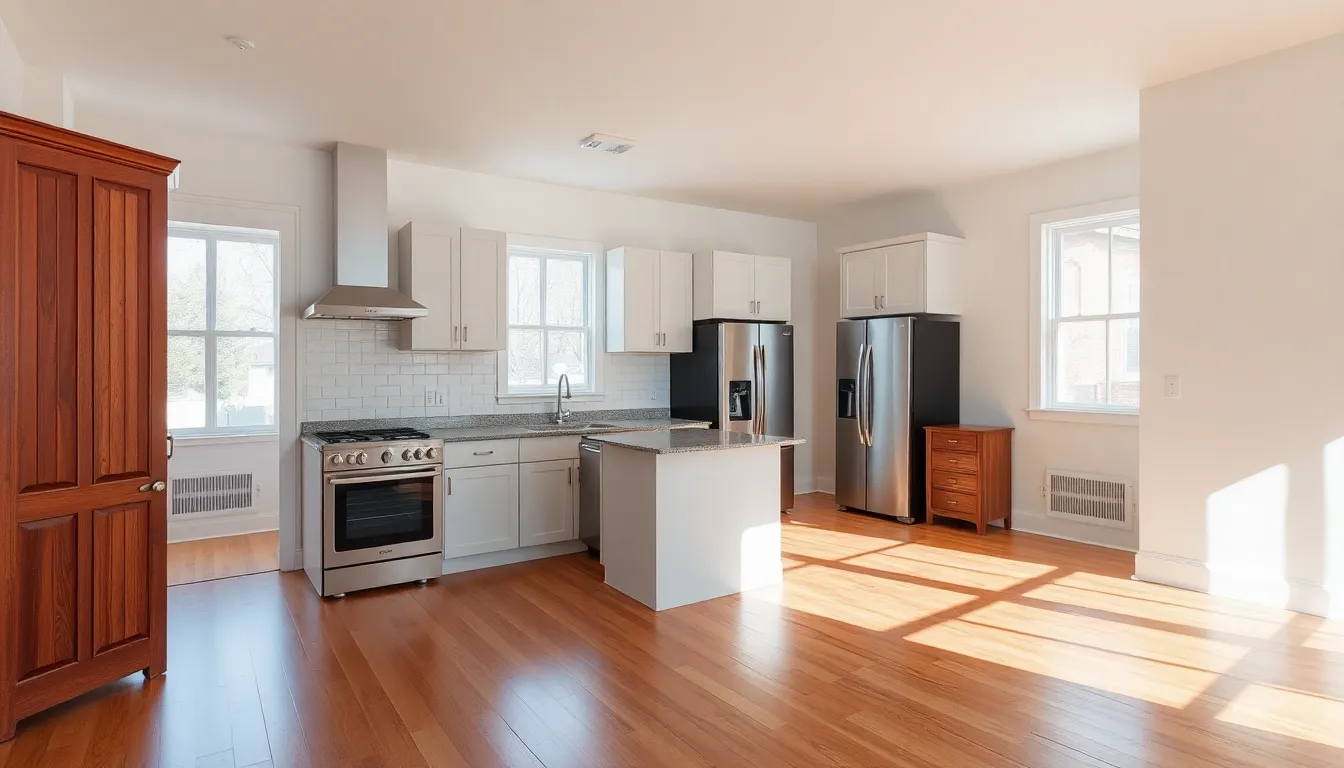In the world of rental units, first impressions matter. Picture this: a potential tenant walks into a drab, outdated space and imagines their life there. Spoiler alert: they won’t be imagining anything beyond the nearest exit. Upgrading rental units isn’t just a good idea; it’s a game-changer that can boost appeal and profits faster than you can say “new backsplash.”
From fresh paint to smart home tech, the right upgrades can transform a tired apartment into a coveted living space. It’s not just about aesthetics; it’s about creating an environment where tenants feel at home. So why not roll up those sleeves and dive into the world of rental upgrades? After all, a little investment today can lead to big returns tomorrow—and who wouldn’t want to cash in on that? Let’s explore the top upgrades that’ll have tenants lining up around the block.
Table of Contents
ToggleImportance Of Rental Unit Upgrades
Enhancing rental units proves crucial for attracting quality tenants and increasing rental rates. Small improvements can make a significant impact on the overall aesthetic and functionality of a space. Fresh paint might refresh room appeal, while modern fixtures can modernize outdated designs.
Upgrades like new countertops or energy-efficient appliances not only beautify a unit but can also lower utility costs for tenants. Potential renters often seek amenities that simplify their lives, such as smart home devices or improved security features.
Long-term investment in rental property pays off with reduced vacancy periods and increased tenant retention. Better-maintained rental units typically see higher demand, allowing landlords to command premium prices. Market studies indicate that properties with upgraded features attract tenants 20% faster than those lacking enhancements.
Overall, fostering an inviting and modern atmosphere can lead to higher rental income and lower turnover costs. Landlords might consider prioritizing upgrades based on market trends and tenant preferences to maximize their return on investment. Emphasizing the importance of these improvements helps align property values with tenant expectations.
Types Of Rental Unit Upgrades

Upgrading rental units can take various forms, primarily focusing on aesthetics and functionality. Landlords can choose from cosmetic or functional upgrades based on their goals.
Cosmetic Upgrades
Cosmetic upgrades enhance the visual appeal of a rental unit. Fresh paint creates a clean slate, inviting potential tenants with a modern touch. New flooring options, like hardwood or laminate, increase the overall aesthetic, making spaces feel larger. Upgraded fixtures, such as lighting and hardware, offer a polished look without a significant investment. Kitchen and bathroom renovations, including new countertops and stylish cabinets, attract renters’ attention.
Functional Upgrades
Functional upgrades improve the everyday experience for tenants. Energy-efficient appliances reduce utility costs, appealing to environmentally conscious renters. Smart home technology, like thermostats and security systems, enhances convenience and safety. Adding storage solutions, such as built-in shelving, optimizes space, making units more practical. Improved plumbing or electrical systems directly address maintenance concerns, ensuring tenants’ comfort. Ultimately, these enhancements not only improve tenant satisfaction but also increase property value, fostering long-term financial benefits.
Cost Considerations
Understanding the costs associated with rental unit upgrades is essential. Both budgeting and potential returns require careful evaluation.
Budgeting For Upgrades
Landlords must identify how much to allocate for improvements. Costs can vary significantly depending on upgrade type. Cosmetic changes, such as painting or flooring, often involve lower expenses compared to functional upgrades like appliances or smart technology. Prioritizing upgrades based on tenant preferences enhances returns. Allocating funds strategically maximizes the impact of each dollar spent. Consider a moderate budget to assess potential changes that fit within financial constraints. Setting a realistic budget enables a clear path for effective enhancements while maintaining financial balance.
Return On Investment
Calculating the return on investment involves understanding both short and long-term benefits. Research shows properties with upgrades attract tenants 20% faster. Improved amenities often justify higher rental rates, yielding increased income. Enhanced features also reduce vacancy periods, which contributes to financial stability. Landlords frequently see an uptick in tenant retention rates, further securing profitability. Analyzing market trends aids in identifying upgrades that offer the best returns. Prioritizing upgrades with proven ROI potential leads to better financial outcomes for property owners. Informed choices make a difference in maximizing rental unit value.
Impact On Tenant Satisfaction
Upgrades directly affect tenant satisfaction by enhancing their living experience. Fresh paint can transform a dull room into a vibrant space, making tenants feel more at home. Energy-efficient appliances not only reduce utility costs but also contribute to a more comfortable lifestyle. Improved security features, such as smart locks, provide peace of mind, which many tenants prioritize.
Smart home technology offers convenience that today’s renters appreciate. These devices simplify daily routines, adding significant value to a rental unit. Statistics show that properties equipped with such features attract tenants 20% faster than those without.
Cosmetic changes, while visually appealing, play a vital role in tenant satisfaction. New flooring or updated fixtures can make significant differences in a unit’s overall appeal. An inviting atmosphere leaves a lasting impression on potential renters.
Landlords benefit from understanding the importance of both cosmetic and functional upgrades. A well-rounded approach fosters better relationships with tenants. Higher tenant satisfaction often leads to increased retention rates, which means fewer vacancies and lower turnover costs.
Evaluating the return on investment is essential for landlords. Prioritizing upgrades based on market trends can lead to greater financial benefits. Studies indicate that properties with attractive upgrades justify higher rental rates, enhancing income potential significantly. By investing wisely in rental unit enhancements, landlords can create appealing spaces that attract quality tenants and improve overall satisfaction.
Investing in rental unit upgrades is a strategic move for landlords aiming to enhance property appeal and profitability. By focusing on both cosmetic and functional improvements, landlords can create inviting spaces that attract quality tenants. These upgrades not only improve aesthetics but also contribute to a better living experience, leading to higher tenant satisfaction and retention.
With careful budgeting and a focus on market trends, landlords can make informed choices that maximize their return on investment. The benefits of upgraded rental units extend beyond immediate financial gains, fostering a sense of community and comfort for tenants. Ultimately, prioritizing upgrades is key to thriving in a competitive rental market.



